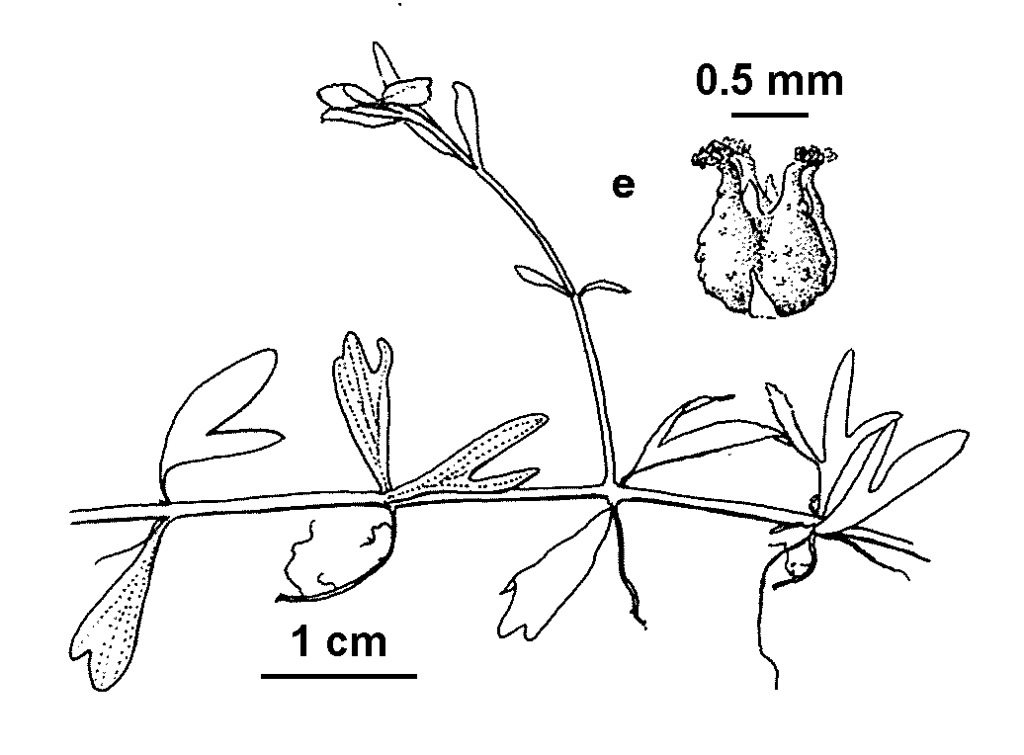Myriophyllum amphibium
Labill. Broad Water-milfoilPerennial marsh, semi-aquatic or emergent herb; stems mat-forming, rooting at the nodes, tips erect, to 7 cm tall, c. 1 mm diam. Leaves opposite, broad-lanceolate to obovate, with a terminal gland, 5–25 mm long, subfleshy, margins entire or rarely with 1 or 2 lobes or teeth. Bracteoles usually linear to lanceolate, 0.7–0.8 mm long; flowers solitary. Male flowers sessile or shortly pedicellate; sepals 4, lanceolate to oblanceolate or ovate to obovate, 0.8–1 mm long; petals 4, 1.8–2.5 mm long, red; stamens 8. Female flowers sessile; sepals triangular, c. 0.4 mm long; petals absent; ovary 4-celled, styles cylindric, becoming reflexed, stigmas red, fading to white. Fruit cylindric, purplish-black; mericarps more or less tear-drop-shaped, 1.1–1.2 mm long including style, sparsely warty-papillose. Flowers Nov.–Mar.
GleP, Brid, VVP, GipP, OtP, WaP, GGr, EGL, WPro, HSF. Also SA, Tas. Scattered across southern Victoria where it may be found around lakes, along boggy stream margins or in pools along rivers.
Leaf shape is variable and very narrow-leaved forms may be difficult to distinguish from M. pedunculatum.
Jeanes, J.A. (1996). Haloragaceae. In: Walsh, N.G.; Entwisle, T.J., Flora of Victoria Vol. 3, Dicotyledons Winteraceae to Myrtaceae, pp. 887–908. Inkata Press, Melbourne.
 Spinning
Spinning

